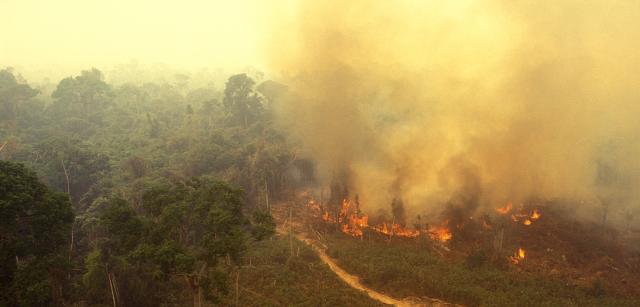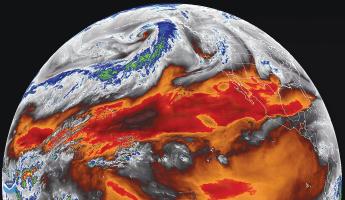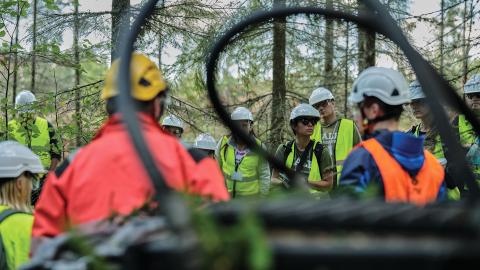
Biomass Loss in Tropical Forests Could Result in Increased Carbon Emissions
A climate change-induced loss in carbon-storing tropical forest biomass could result in accelerated global warming, according to a study by Paulo Brando, associate professor of ecosystem carbon capture, and Maria del Rosario Uribe, YSE postdoctoral associate.
Tropical ecosystems store over half the world’s above-ground carbon in their biomass, which includes vines, trunks, and leaves. A decrease in biomass reduces the capacity of these ecosystems to capture and store carbon. The study, published in Nature Climate Change, said the decrease will likely stem from more prolonged and intense dry periods in forests.
The research team used maps of biomass from satellite imagery to study above-ground biomass in the tropics of South America, Africa, and Asia. To make predictions about the future, researchers leveraged historical data reaching back to 1950 to build empirical statistical and machine learning models. They found a strong relationship between above-ground biomass and spatial climate variability.
“Wetter regions have much more biomass, or carbon, than drier regions. If wetter tropical areas shrink due to climate change, then you’re likely to lose the massive amount of carbon they store as well,” Uribe says.
The losses due to climate change are not massive but are concentrated in a specific key region of the southeastern Amazon, the researchers note.
“The tropics hold a considerable amount of carbon, almost 20 years of global human emissions,” Brando says. “We show that tropical ecosystems can resist a lot of climatic change, but the future of these ecosystems will depend on how we protect these areas from deforestation, logging, and human-made fires.”

Conservation of Wildlife Could be a Global Warming Game Changer
This is 95% of the amount needed every year to keep global warming below the critical 1.5-degree Celsius threshold outlined in the Paris Agreement.
Could preserving and restoring wildlife be among the best nature-based climate solutions available to humankind? A new study led by Oastler Professor of Population and Community Ecology Oswald Schmitz focusing on nine species found that protecting or restoring their populations could collectively facilitate the additional capture of 6.41 billion tons of carbon dioxide annually. This is 95% of the amount needed every year to keep global warming below the critical 1.5-degree Celsius threshold outlined in the Paris Agreement.
The study, published in Nature Climate Change and co-authored by 15 scientists from eight countries, examined marine fish, whales, sharks, grey wolves, wildebeest, sea otters, musk oxen, African forest elephants, and American bison.
"Wildlife species, throughout their interaction with the environment, are the missing link between biodiversity and climate," Schmitz says. "This interaction means rewilding can be among the best nature-based climate solutions available to humankind."

Solved: 100-Year-Old Botanical Mystery
Craig Brodersen, professor of plant physiological ecology, and his research team have resolved a century-long paleontology debate on why the cylindrical vascular system of the world’s earliest plants rapidly changed. The answer? It made them more resistant to drought.
In a study published in the journal Science, the researchers — who include lead author Martin Bouda ’17 PhD and Kyra A. Prats ’16 MFS, ’22 PhD — examined why the simple, cylindrical vascular system of the earliest land plants changed. They found that as plants moved onto land with fewer water resources, they overcame drought-induced air bubbles that killed them by reconfiguring their xylem into more complex shapes that prevented air bubbles from spreading.
“It didn’t just sort of happen. There’s actually a good evolutionary reason,” Bouda says. “There was strong pressure from drought that made it happen. That was the 100-year-old riddle, which we’ve now answered.”
The authors note that the discovery is helpful in understanding how plants may adapt to climate change, which is bringing more droughts across the globe.
“Now that we have a better understanding of how the organization of the vascular system is put together and what influences a plant’s ability to tolerate drought, you could conceivably engineer more resistant crops,” Brodersen says.


